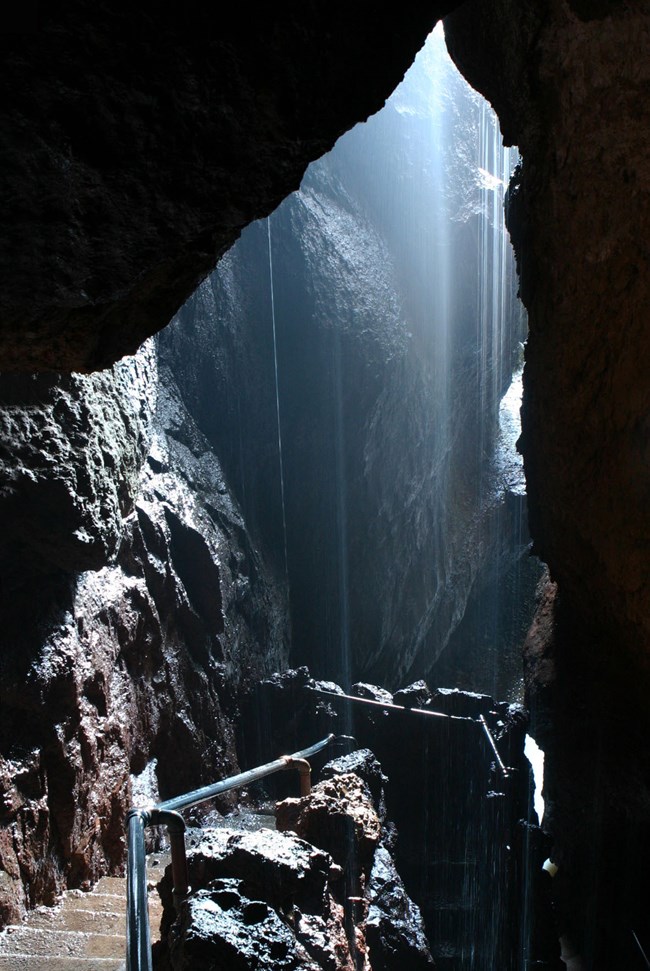
Paul Johnson The Talus Caves of Pinnacles National ParkWhat is a Talus Cave?Talus caves are a unique geological formation created when large boulders or rock fragments tumble down from cliffs and become wedged in narrow canyons or fractures. Unlike limestone or solution caves formed by the dissolution of rock, talus caves are formed through mechanical processes involving the movement and accumulation of loose rocks. These caves result from the shifting and settling of fallen rocks, creating spaces between the boulders that form the cave passages. In Pinnacles National Park, these steep, narrow canyons were shaped by faults and fractures in the park’s volcanic rock. Over time, as the cliffs fractured due to tectonic forces and erosion, massive boulders fell into these canyons, becoming stacked and wedged tightly together. The gaps and hollows between these enormous rocks create the talus caves that visitors explore today. The stability of the caves depends on how well the boulders are locked in place, often supported by smaller particles like gravel and sand that have lodged between them over centuries. Cave Locations in PinnaclesPinnacles National Park has two primary talus cave areas:
Additionally, several small and lesser-known talus caves are scattered throughout the park. The rockfalls that filled these fractures are believed to have occurred during the last ice ages, though rockfall and erosion continue to shape the caves today. Boulders vary greatly in size, from small stones to massive rocks weighing thousands of tons. The Formation Process and Ongoing ChangesTalus caves at Pinnacles continue to evolve. The boulders that create these caves rest on a bed of smaller particles, such as gravel and sand, which have accumulated at the contact points between the rocks. Over time, water flowing through the caves, particularly during flash floods, erodes these smaller particles. This erosion can alter the structure of the caves, causing them to shift slightly or, in rare cases, resulting in rockfalls that reshape the cave environment. Historical and Cultural ContextAlthough there is no documented evidence of Native American habitation within these talus caves, archaeological investigations are ongoing. The stories of the local Mutsun and Chalone peoples have largely been lost, and much of their history remains undocumented. However, non-Native legends suggest that the caves were once used as a hideout by the infamous bandit Tiburcio Vasquez, who was active in central California during the 19th century and was ultimately captured and hanged in San Jose in 1875. Despite the speculative nature of these stories, they remain a part of local lore and campfire tales, adding a layer of mystery and intrigue to the caves. Development and Visitor AccessIn the 1930s, the Civilian Conservation Corps (CCC) constructed trails through the talus caves at Pinnacles, making them accessible to visitors without the need for ropes or ladders. The stairways and bridges built by the CCC have endured through decades of storms and thousands of visitors. Today, the Bear Gulch and Balconies Caves are some of the park’s most popular attractions, inviting adventurers to explore their cool, shaded passages and experience the park’s geological history firsthand. Before planning a visit, be sure to check for cave closures and updates on conditions. |
Last updated: October 18, 2024
